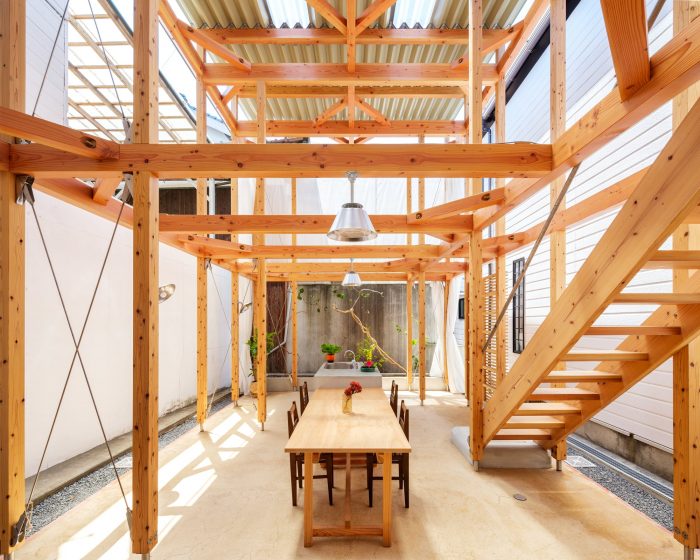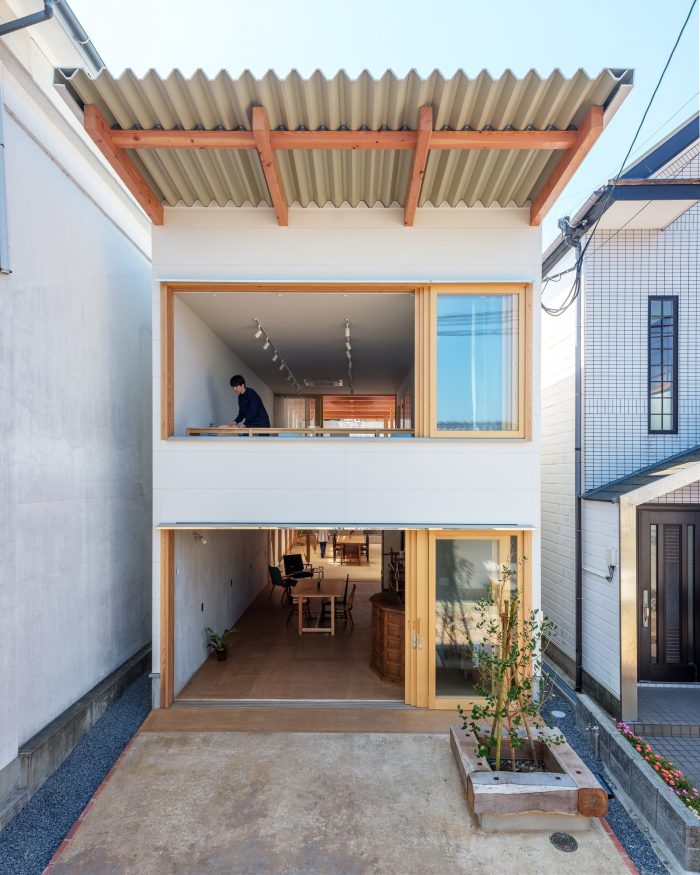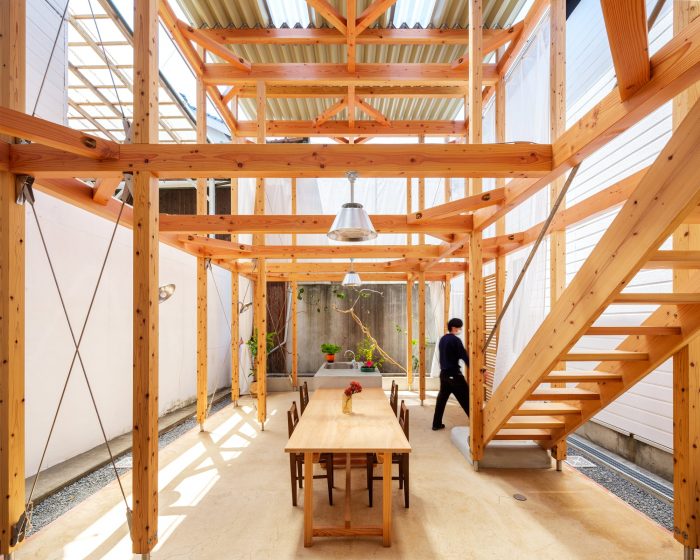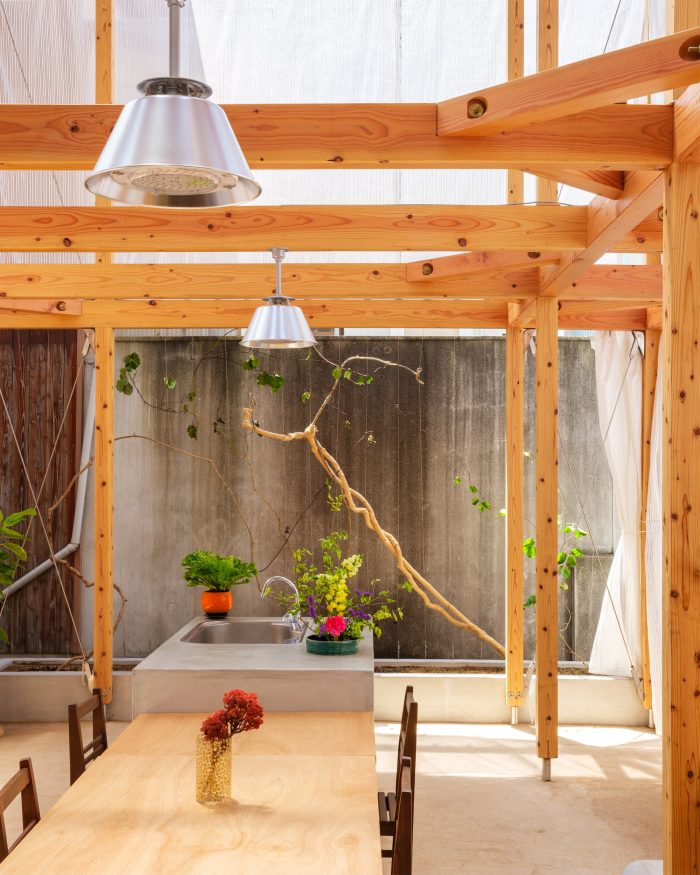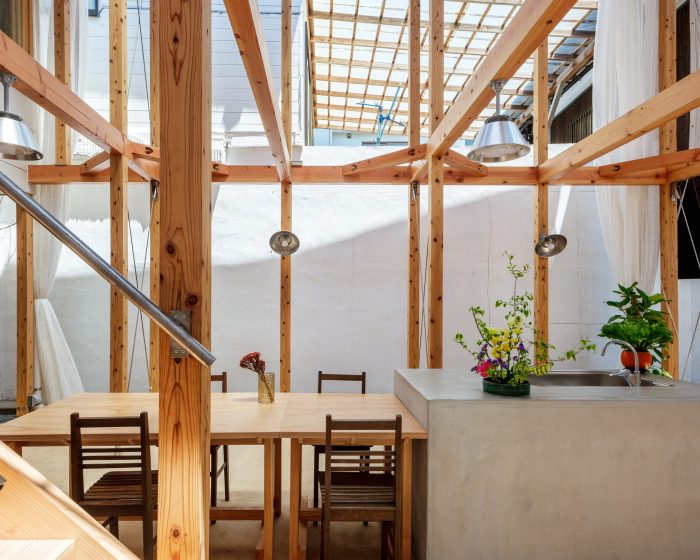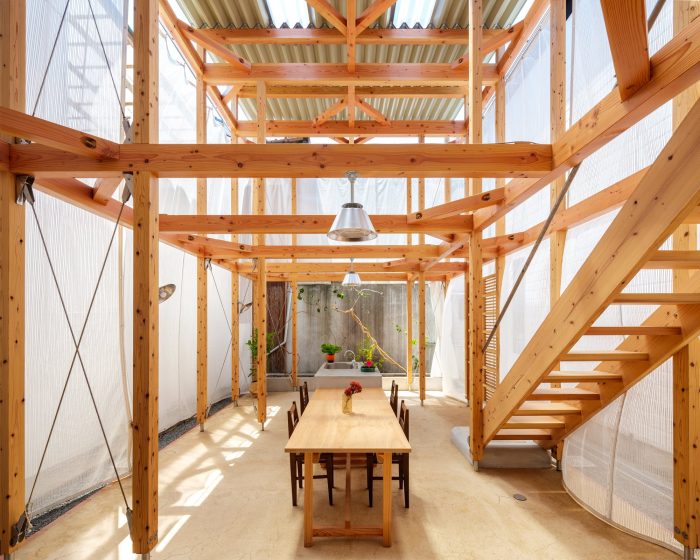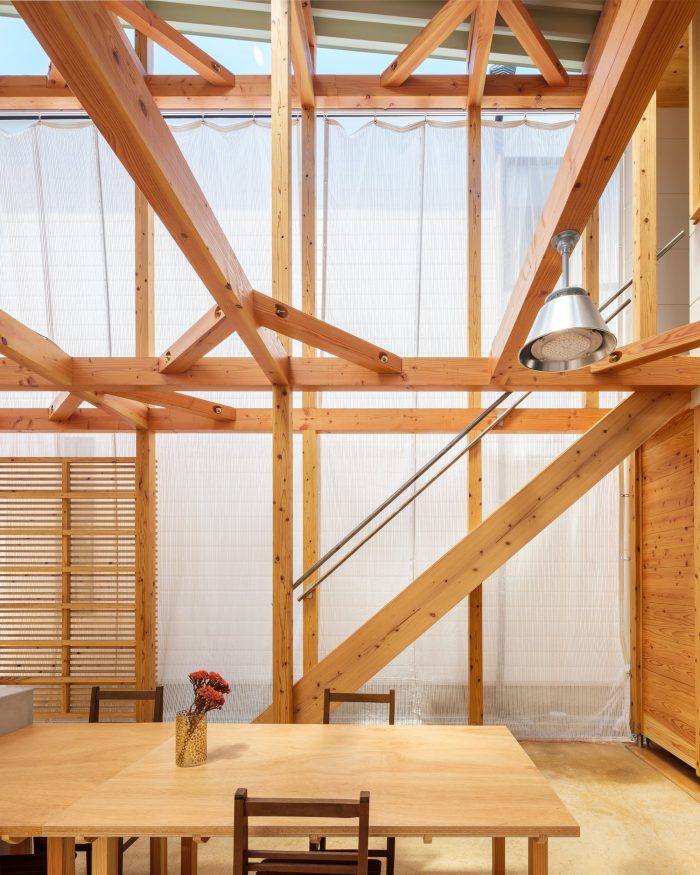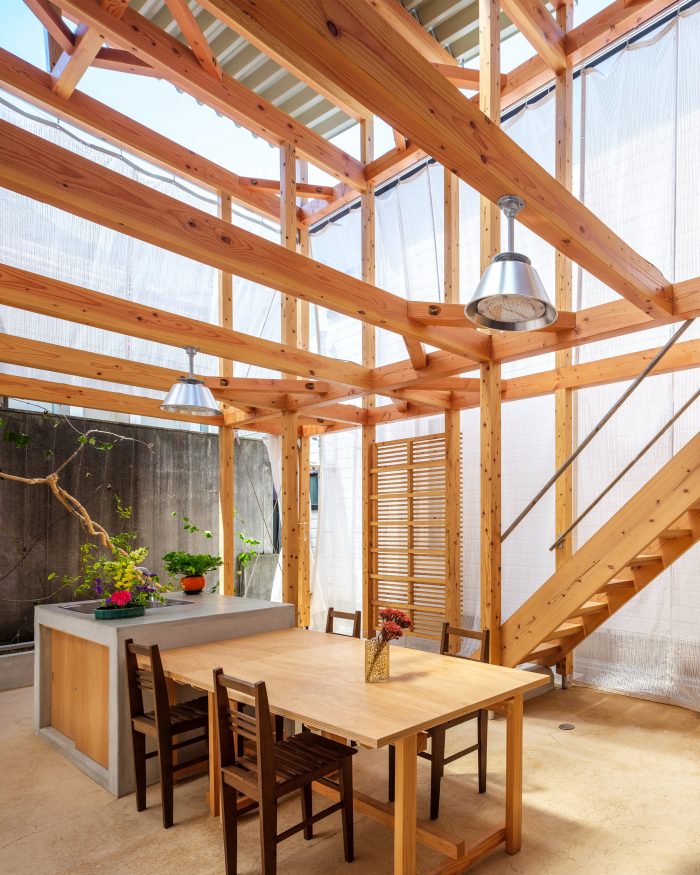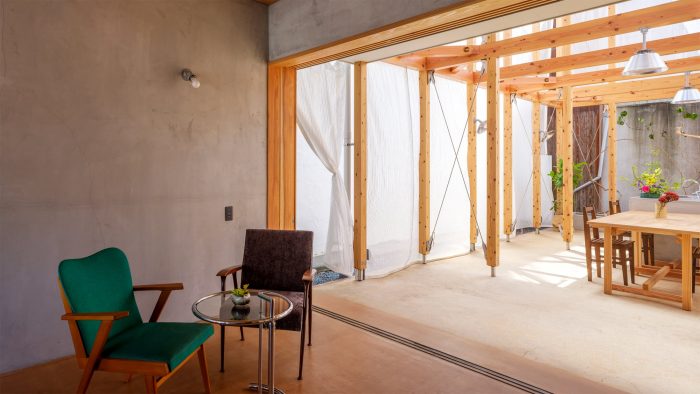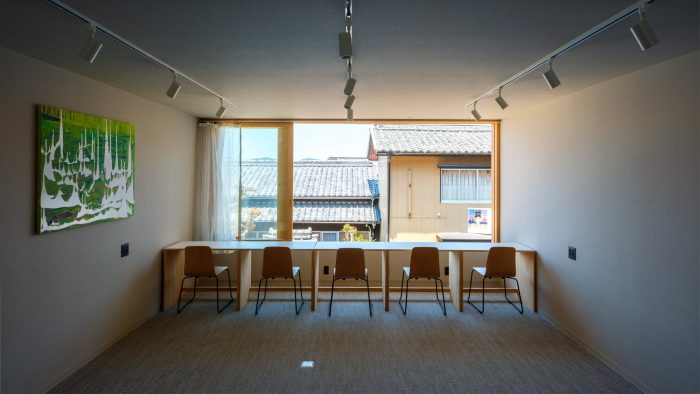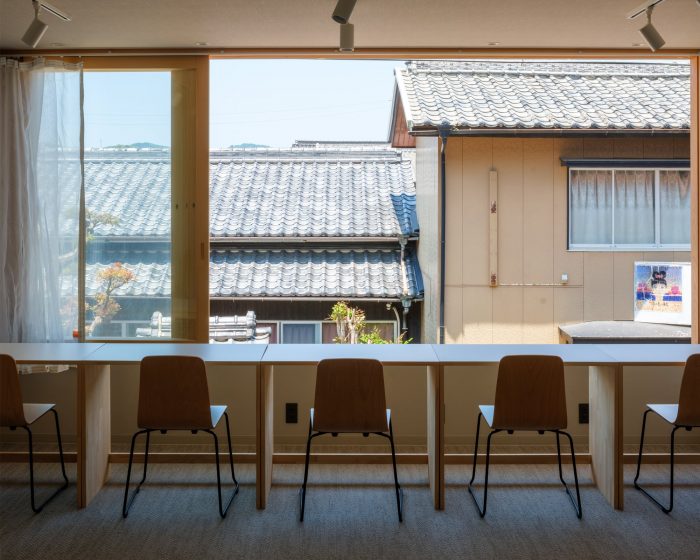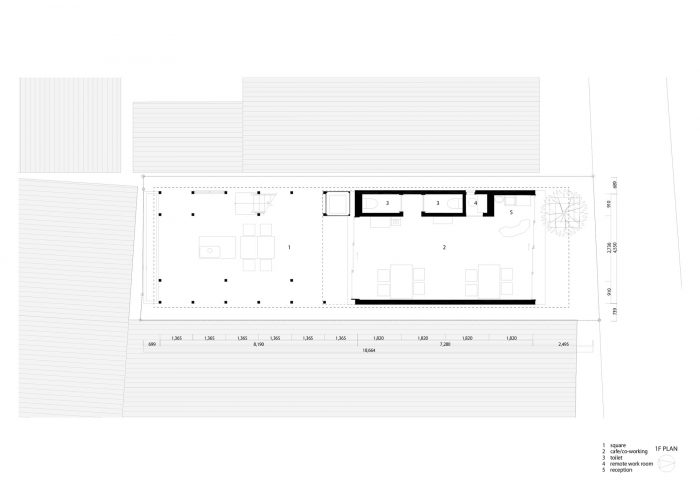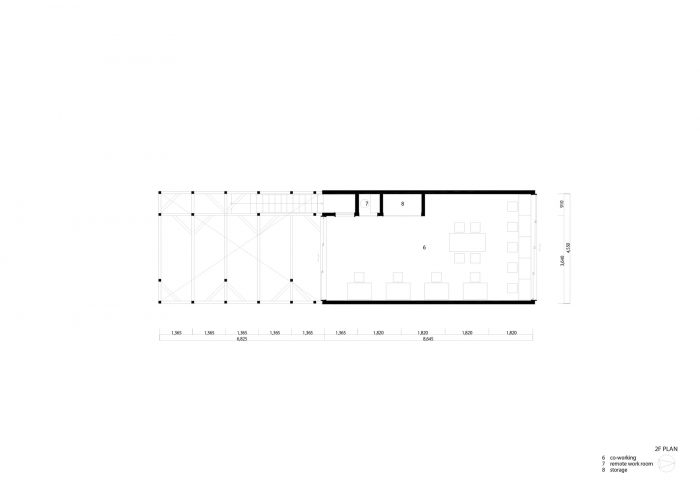该项目位于日本长崎县的一个偏远小岛–一岐岛。ACB Living的项目包括一个联合办公空间及其前台、公司的场外培训空间、远程工作间和一个咖啡馆。通过将该项目分散在整个城镇,用户被邀请在该地区漫步。这样一来,与小镇居民的意外相遇就会自然发生,自发的对话也会随之而来。该项目没有将整个实体聚集在一个单一的建筑中,而是通过新建和翻新的小规模干预措施分布在整个城镇。这样的范围更符合小镇的规模,让邻居们对这些新空间感到更熟悉。
The project is located on Iki Island, a small remote island in Nagasaki Prefecture, Japan. The program of ACB Living consists of a co-working space and its front desk, off-site training spaces for companies, remote work rooms, and a café. By scattering the program across the town, the users are invited to stroll around the area. This way, accidental encounters with the residents of the town can naturally occur and spontaneous conversations ensue. Instead of gathering the whole entity into one single building, the program is distributed across town with new construction and refurbished small-scale interventions. Such a scope is a better fit with the town’s scale, allowing the neighbors to feel more familiar with these new spaces.
长期以来,该镇一直受到空置房屋和空地问题的困扰。通过将ACB Living的项目扩展到整个小镇,并让它以不同的形式出现,该公司旨在解决该镇的紧迫问题,同时发展其经营场所。一楼和二楼的室内空间被减少到最低限度,以便最大限度地扩大地块后面的室外空间,从而保证低能耗。
The town has long been suffering from the vacant houses and empty plots problem. By extending the program of ACB Living throughout the town and letting it take different shapes, the company aims to tackle the town’s pressing problem while growing its premises. The interior spaces of the first and second floors are reduced to the minimum in order to expand the outdoor space at the back of the plot to its fullest extent and consequently, guarantee low-energy consumption.
考虑到该地块周围原有的条件和该地区的气候,我们探索了一种被动式能源解决方案,对该地块进行优化利用。该地块的三面都被邻近的建筑紧紧包围着。利用这一奇特的特点,并依靠现场特定的气流,布置了一个无墙的双层高度的室外空间。为了控制光线和风的照射量,沿着户外空间的周边放置了农用板材,用户可以自由地绘制。波浪形的农用布有助于直观地看到风的存在,同时,也模糊了场地周边的线条。此外,前面提到的相邻的墙壁成为项目室内设计的一部分。
Taking into consideration the pre-existing conditions surrounding the plot and the region’s climate, we explored a passive energy solution that provides optimal use of the site. Three sides of the plot are tightly encircled by neighboring buildings. Taking advantage of this peculiar characteristic and relying on site-specific air flow, a wall-less double-height outdoor space is laid out. In order to control the amount of light and wind exposure, agricultural sheets are placed along the perimeter of the outdoor space which the users can draw freely. The billowing agricultural sheets help visualize the presence of the wind and, at the same time, blur the lines of the site’s perimeter. Moreover, the previously mentioned neighboring walls become part of the project’s interior design.
在过去,全城常见的景象是植物、椅子和其他属性模糊的物体。甚至房屋的私人入口也与公共领域松散地联系在一起。该项目旨在通过创造一个适当的环境,使这种依赖性能够蓬勃发展,从而使其与邻居之间的依赖关系回归。这个项目的位置–位于城镇街道的一个缝隙中–与只能听到机械噪音的城市地区不同,它为用户提供了一种不同的噪音:居民的活动声音、鸟儿的歌唱和昆虫的鸣叫。这个项目所尝试的空间安排,不一定局限于它目前的程序,可以很容易地转变为住宅或商店。更重要的是,它为该地区提出了一种新的生活方式,在那里每个人都是松散的。
In the past, a common sight across town was plants, chairs, and other objects whose property was ambiguous. Even the houses’ private entryway was loosely connected to the public realm. The project aims to bring back a codependent relationship with its neighbors by creating an appropriate environment where this reliance can flourish. The whereabouts of this project —located in a crevice on the streets of the town—, unlike in urban areas where only mechanical noise can be heard, offer its users a different kind of noise: the sound of the residents’ activities, the birds singing and the insects chirping. The spatial arrangement that has been tried out for this project, isn’t necessarily restricted to its current program and could be easily transformed into a residence or a store. What’s more, it’s a proposal for the region for a new lifestyle where everyone is loosely connected.
Architects: Lighthouse
Area : 72 m²
Year : 2021
Photographs :Yashiro Photo Office
Design Team : Tatsuhiro Shinozaki, Kentaro Hayashi
City : Iki
Country : Japan


